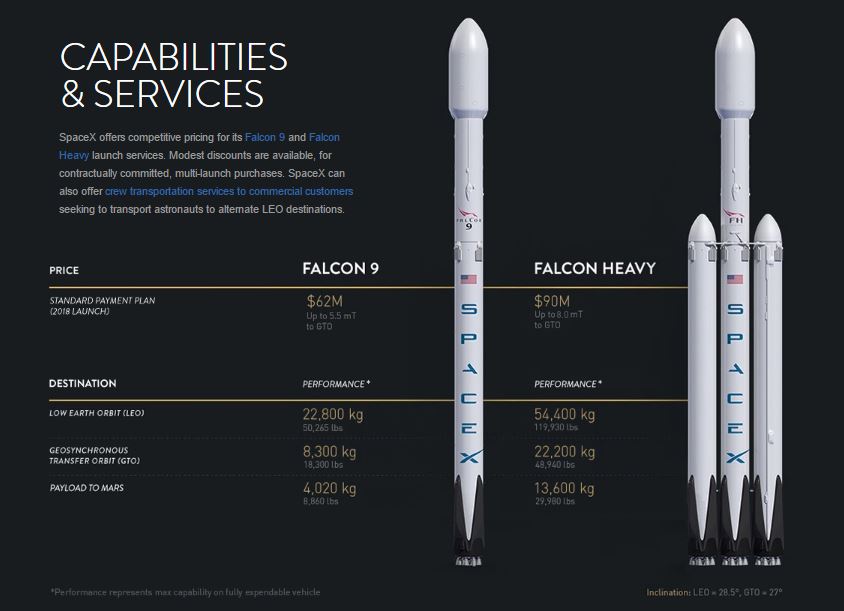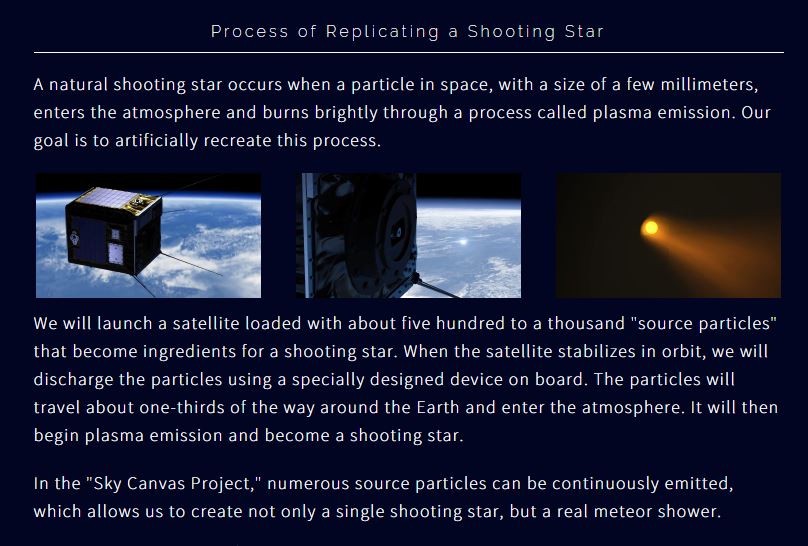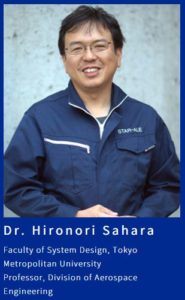
Ok, meteor showers, on demand, from a satellite, developed by a company in Japan. Yes, I do believe it’s happening.

A company out of a small office in Japan is putting together something that will literally allow you to fire shooting stars from Earth’s upper orbit down into the atmosphere, and one of their potential clients is the 2020 Tokyo Olympics. From Bloomberg News:
Ale Co., which [Lena] Okajima runs with five people out of a small office in Tokyo, could start offering on-demand meteor showers by 2018, using a carry-on-sized satellite packed with as many as 1,000 centimeter-sized pellets. Released remotely from earth and available in different colors, the shooting stars would be seen by as many as 30 million at a time in urban areas–they may even be ready in time for the 2020 Tokyo Olympics.
Event organizers, governments and theme-park operators are Ale’s most likely customers, similar to how fireworks shows are already put on. Wealthy individuals may also be potential buyers, Okajima said. Japan is also an ideal place to launch this kind of business, given the popularity of the spectacles here. The archipelago’s fireworks industry was worth 5.2 billion yen ($48 million) in 2014, according to the Japan Pyrotechnics Association.
“In the sense that you light up the sky, shooting stars and fireworks are really the same,” said Haruyuki Kono, the group’s senior executive director. “You have to turn it into a show. With a tradition of 300 years, hundreds of thousands now come to see such events.”
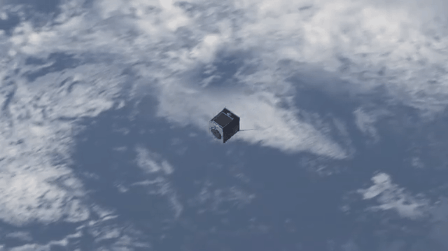
This is pretty serious stuff here! We’re talking pyrotechnic displays firing down from the sky. A question on everyone’s mind is “will this be safe?” I checked in with the ALE website to see if they made any comment on this — from the ALE website’s FAQ:
What would happen to the satellites after the mission?
In order for used satellites to not become debris (space trash), we follow the international regulation and ensure that it is combusted by entering the atmosphere within the next 25 years. In this case, the used satellite itself will become a very large shooting star.
Is there any danger of a shooting star particle colliding other objects in space (i.e. satellites or debris) and creating more debris?
No; We are working with relevant organizations for ensureing space safety.
Joint Space Operations Center (JSpOC), operated by US Strategic Command’s Joint Functional Component Command for Space, provides a database which tracks all satellites and debris in space. Based on this database, we have developed a software that calculates the probability of our particles colliding with other objects. The particles will not be discharged unless safety is confirmed. In a rare case that there remains a question in safety based on the simulation, we will abort the discharge to prevent a possible disaster.
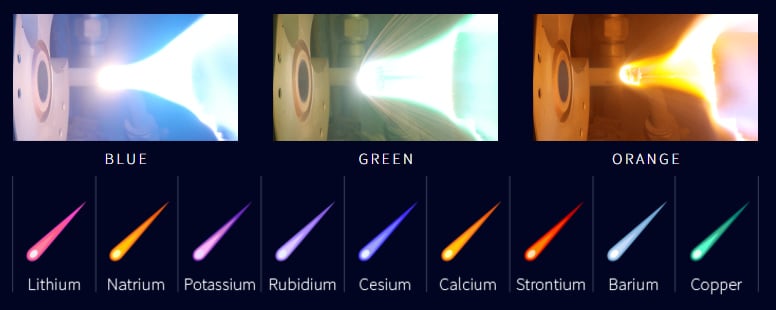
AND, of COURSE there is a video!!
The founder of Ale, Lena Okajima, has a PhD in Astronomy and had a job at Goldman Sachs, according to the Wall Street Journal:
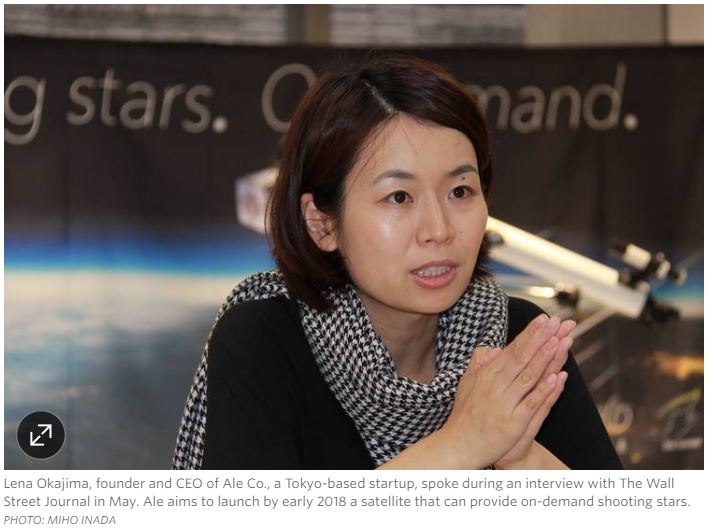
A meteor shower she witnessed while a student made a deep impression. More than a decade later, her startup Ale Co. is working to provide artificial shooting stars on demand for festivals, civic events or any other occasion that calls for fireworks of a more astronomical quality.
“I don’t just want to sell the stars, I want to pair them with exciting events on the Earth so people can enjoy them,” said Ms. Okajima, who previously worked for Goldman Sachs and holds a Ph.D. in astronomy.
Ale is one of an increasing number of Japanese space startups attracting attention and investment. In March, Singapore-based Astroscale Ltd., which was founded by a Japanese man and plans to help clear space debris, received $35 million in funding, including $30 million from a Japanese state-backed investment fund. The same month, Japan’s space agency announced it would work with Japanese venture ispace technologies to create an insectlike robot to explore the moon.
This is a pretty cool idea, I have to say. I don’t think any of the events I get to do could afford this though… the initial cost projection to get the satellite with all of the chemical fireballs in it is around $2700 a kilogram, aboard a Space-X rocket, since Elon Musk is the A-game in town right now with respect to space exploration, and the weight estimation is about 50 to 60 kilograms… You have to see this graphic of how much it costs to send something to space aboard one of the Falcon rockets… it’s 62 million dollars.
I wonder how long it will take for the actual payload to be used up, or if they will coordinate multiple “productions” to be mounted from a single satellite? This seems like the idea that might be able to generate lots of space trash, right? I mean, one or two Bieber parties and a Kanye birthday bash, and we’ll have so many pieces of interstellar festival trash to clean up… or maybe not. I’m sure someone will ask that question.
Here’s a quick but interesting WSJ interview about the company, founder, and some of the process:
How this thing works:
So, in short, ALE sends up a satellite device that is loaded with several hundred to a thousand little pellets of secret chemical that are then shot out of said device using a special on-board firing mechanism that basically launches the pellets towards the atmosphere, where they burn up. It’s called plasma emission, which is brought about by the increase in friction of something entering atmosphere — it heats up and burns, and in the process, creates some visible light.
Ale has done their testing in an arc-heated wind tunnel to simulate the conditions of a space vacuum…
Photos of that device, I found these to be pretty interesting — like a little National Ignition Facility!
Now, all being said, there are some very, very big brains behind this tech. Dr. Hironori Sahara from Tokyo Metropolitan University’s Aerospace Engineering division; Dr. Takeo Watanabe from Teikyo University’s Aerospace Engineering program; and Dr. Shinsuke Abe from Nihon University’s Aerospace Engineering department. I highly recommend hitting the links on these mens’ names here in this paragraph, each links to an interview with them.
Some hat-tips:
Spoon and Tamago
WSJ
Bloomberg
The ALE Co. website
SpaceX

